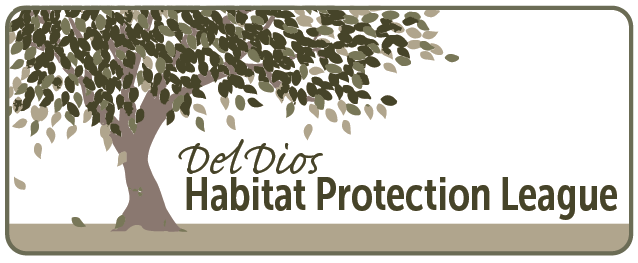A mysterious pest has damaged willows along the Escondido Creek Watershed, leaving conservation officials scrambling for answers to the die-off.
Officials with the Escondido Creek Conservancy originally feared the damage was caused by the shot hole borer beetle, which attacks 137 tree species including willows, oaks and sycamores.
Tests at UC Riverside came back negative for a fungus associated with the beetle, but didn’t reveal what could be threatening the watershed.
“.. It was found to not be the beetle — it was something else going on,” said Ann Van Leer, executive director of the conservancy.
The problem began over the summer, when the Escondido Creek Conservancy learned that trees in Elfin Forest were rapidly wilting and dying, Van Leer said. Months later, the damage is especially visible near Questhaven and Harmony Grove Road — a spot that conservancy board member Leonard Wittwer called “ground zero”of the infestation — where a tangled heap of branches lies in the creek bed. Blackened leaves droop from nearby trees.
“When these things became infested, it was like someone turned their blow torch on and burned them,” Wittwer said.
On Aug. 3, the conservancy closed the trails in the Los Cielos Preserve, out of fear that the invasive beetles could be causing the destruction.
The Kuroshio Shot Hole Borer has infested areas of coastal San Diego, according to the University of California Division of Agriculture and Natural Resources. The insect, an invasive species that originates from the highlands of Taiwan and Okinawa, decimated the Tijuana River Valley, where hundreds of thousands of denuded tree trunks stand in the place of formerly lush streamside habitat.
The collapse of willow groves ripples through the watershed’s ecosystem, Van Leer said.
“Willows are one of the key trees which support other plants and animals,” she said. “It’s one of the foundation plants. A lot of birds and insects rely on the willows. It’s an indicator species of the watershed.”
The loss of those trees harms animals such as the least Bell’s vireo, an endangered songbird that lives along streams. And the stands of dead wood pose their own hazards to surrounding communities.
“It’s an ecological bummer and then becomes a fire hazard,” Wittwer said.
Worried that Escondido Creek could suffer similar damage, the conservancy closed its trails to the public on Aug. 3, and submitted samples from the trees to plant pathologist Akif Eskalen at UC Riverside.
“We didn’t know, and we wanted to be very cautious, because we didn’t want people and bicycles spreading the infection by moving through the area,” Van Leer said.
They were surprised but relieved to find that the samples showed no signs of Fusarium fungus, which transports and spreads the beetle infestation. Instead, the lab found a different fungus, Phaeoacremonium.
The results only compounded the puzzle, however, since Phaeoacremonium is a slow-growing pest that isn’t associated with sudden die-offs.
“In communications with Dr. Eskalen, he was interested as to why our willows trees have died so quickly from this particular fungus, which is known to slowly kill trees,” the conservancy stated on its website. “He wondered if something else may additionally be affecting these willows.”
Eskalen said he plans to visit the site on December 2, and hopes to get additional clues to the die-off.
"This is a new disease that we haven’t figured out yet," he said. "We still don’t know what caused the decline of those willows."
After learning that the trees tested negative for the invasive beetles, the conservancy reopened the trails at Los Cielos. They’re also looking for ways to help boost the trees’ resistance to the fungus, and plan to watch carefully for signs of renewed die-off next spring. In the meantime, officials urge hikers and cyclists to stay on the trails, keep dogs on leash, and never remove firewood from the preserve.
View images, video and full article
Reporter: Deborah Brennan
Photographer: Peggy Peattie
Editor: Misael Virgen

